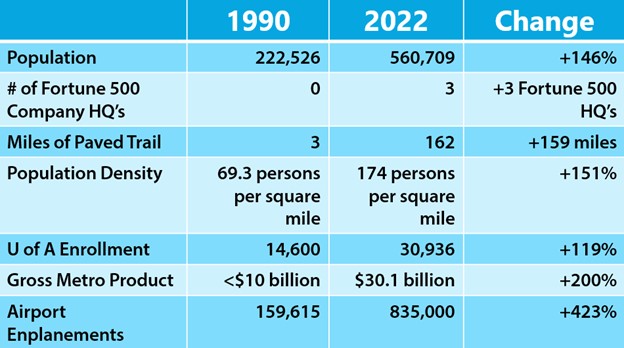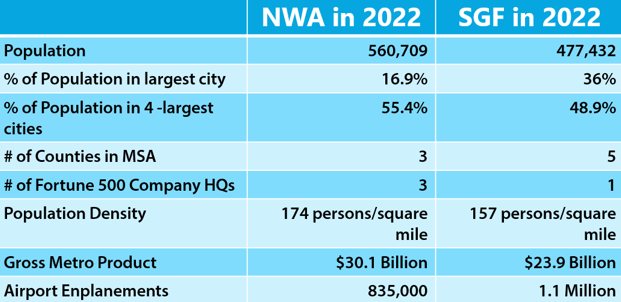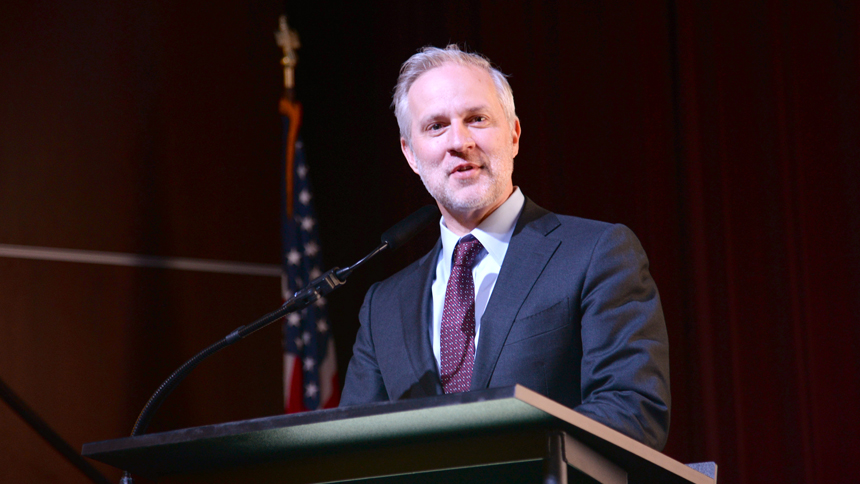Why and How Should Springfield Consider Regional Economic and Community Development?
As the Springfield region grows and our need to attract and retain talent to the area increases year over year, the concept of regionalism continues to become an important topic of conversation.
Mike Malone, University of Arkansas (U of A) vice chancellor for economic development and former president of the Northwest Arkansas Council, led the creation and implementation of regional growth and development strategies that have resulted in significant employment gains, economic growth, and improved quality of life in Northwest Arkansas. At the SBDC’s Annual Meeting on February 22, Malone shared insights and research about the economic and community impact of regionalism with an audience of nearly 500 local business leaders.
Malone began discussing the history of regionalism in Northwest Arkansas (NWA) that started in 1990 with the Northwest Arkansas Council. He expressed the importance of setting specific goals that people can support from the very beginning. For example, the Northwest Arkansas Council began with three infrastructure priorities at the forefront.
- Building four-lane highways
- A new regional airport
- Running water to rural areas
With these goals in mind, business leaders in the Northwest Arkansas Council went to the US House Transportation and Infrastructure Committee Meeting in September of 1990 to discuss their priorities. Eight years later, the Northwest Arkansas Regional Airport was opened.
To further demonstrate Northwest Arkansas's growth due to regionalism, Malone compared NWA from 1990 to 2022 in the chart below.

After comparing Northwest Arkansas to itself, Malone compared NWA and the Springfield Metropolitan Area (MSA) in 2022.

After comparing NWA and the Springfield area, Malone offered the following responses to the question, “Why work regionally?”
- It is how we are evaluated. When people and businesses are looking to move, they evaluate locations and compare them against other suitable locations.
- It is best for marketing. When you can pull from all the resources the whole area can offer, you have a much easier product that you can market.
- It is what your customers want. Customer segments, existing residents, talent attraction, and business attraction are all beginning to look to regionalism.
There are a few factors to consider when looking to build a regional approach.
- Define your region. Evaluate which areas of your region will be included in your approach from the very beginning.
- Your name matters. Research and choose a name that both represents your region and appeals to a larger audience.
- Language matters. The language you use to promote your region is an important part of your identity as a region.
- Leadership and staff. Evaluate what staffing and leadership looks like for the team behind regionalism.
- Clarity of goals and mission. Define what you are and are not going to focus on at the outset.
- Achieve win-win outcomes. Everyone wants to collaborate when there’s something in it for them.
As we continue down a path focused on regionalism, these insights shared by Mike Malone will no doubt inspire us and help us along the way. We must determine for ourselves, what’s next for the Springfield region as we look toward a collective approach to regionalism. What goals and objectives are we going to pursue?
A Look at Economic Development Activity
To kick off the 2023 SBDC Annual Meeting, Senior Vice President of Economic Development, Vicki Pratt, offered an economic development update for the region. She highlighted our progress in developing our workforce and attracting new talent to the region.
She also referred to the recent efforts of the SBDC to develop a five-year strategic plan by understanding the why behind the desired outcomes stakeholders want to see. The SBDC tailored the plan to address those specific needs and created an overarching goal to build regional vibrancy.
Much of the information is contained in the 2022 Economic & Workforce Development Impact Recap, which attendees received at the event. Click here to download your copy!


